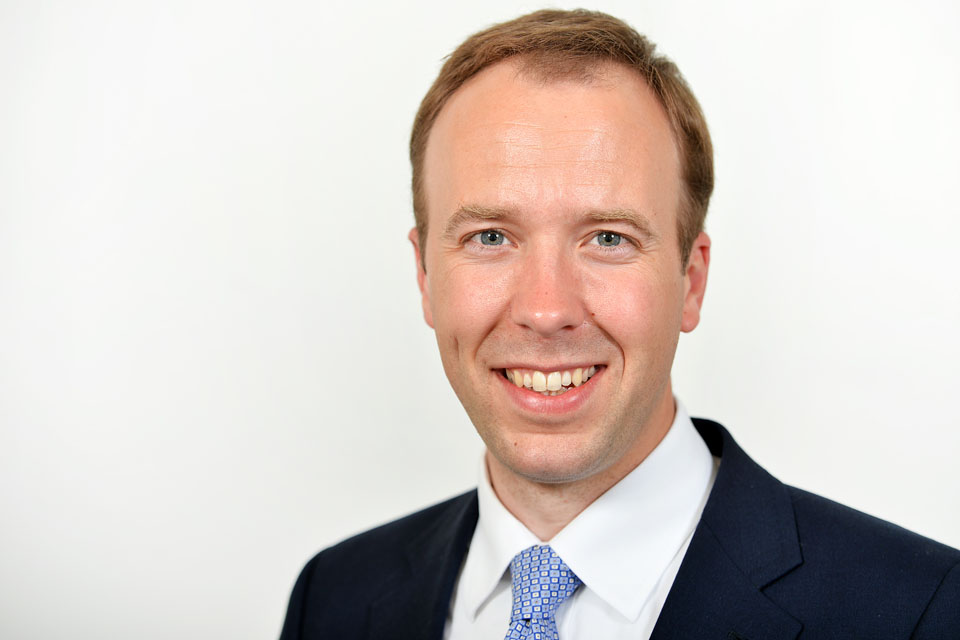South Africa: The Art of a Nation
Minister of State for Digital and Culture, Matt Hancock, delivers speech at opening of new exhibition at the British Museum.

As a man with a deep love of South Africa; the depths of its culture, its strength and vitality, the warmth of its people and the symbol that it gives to the world of its democracy, it’s an honour and a privilege to be here tonight to welcome you all here this opening of this fantastic new exhibition, South Africa: The Art of a Nation, and to celebrate the people to people links between South Africa and the UK.
This is first major exhibition of South African Art at a national UK museum, and as someone who has traveled and worked extensively in South Africa, it gives me particular pleasure that the Minister for Arts and Culture in South Africa, Nathi Mthethwa, has travelled all the way here and accepted the invitation to join us tonight.
Nelson Mandela said of the people of South Africa, that while “…we might have our differences, but we are one people with a common destiny in our rich variety of culture, race and tradition.”
And what he said of South Africa, I believe both applies there, and to all mankind, right across the world. And I think this exhibition, showing as it does, art over 100,000 years juxtaposed with work by contemporary artists, provides real perspective on South Africa’s past, present and future.
I would like to thank all those who made this exhibition possible, the British Museum, the continued and generous support of Betsy and Jack Ryan and Jonathan Ruffer.
I think this exhibition is a real celebration of South Africa as a rainbow nation.
Collaboration and partnership between our two countries is strong, and for this exhibition we received some very significant loans thanks to University of Pretoria and South African Government.
One of the most significant loans are the gold treasures of Mapungubwe, and I have just seen them for myself, and they are incredibly beautiful.
The fact that they are leaving South Africa for the very first time is an honour for us, and we are very grateful. From AD 1220 to 1290 Mapungubwe was the capital of the first kingdom in southern Africa. This lost city was home to an advanced culture of great people who traded with China and India, had a flourishing agricultural industry, and grew to a population of around 5 000.
What is so powerful about displaying these figures, is that there were actually found in the 1930s, but were denied, hidden and marginalised by the apartheid government because it contradicted its racist narrative of terra nullius, the myth of an empty land before arrival from Europe, which was used to legitimise white rule. The objects testify to the sophisticated, settled society which traded gold and ivory with China, India and Egypt many centuries before settlers from Europe arrived.
These figures demonstrate the power and identity that art can bring, and how it can be manipulated.
South Africa’s history and heritage is the story of many different peoples, from San bushmen, with whom the exhibition starts, to the Bantu language speakers who arrived later in 500AD, to the European and Asian people who arrived from the 17th century onwards. The story that it tells is of the building of this rainbow nation. I love the fact that it celebrates both the ancient and the modern.
Modern South Africa has a dynamic contemporary art scene with a rapidly growing global reputation, and with this drive for creativity and innovation, there has never been a better opportunity to forge lasting creative partnerships between the UK and South Africa.
2014 saw the launch of the first UK-South Africa Year of Cultural Exchange showcasing the very best of British culture in South Africa and of South African culture in the UK.
Over 350 different projects were funded, resulting in over 1500 events, creating opportunities for over 4200 different artists to work together across both countries. It was the largest ever concerted programme of people-to-people cultural exchange between the UK and South Africa and one of the British Council’s largest ever collaborations.
Highlights of the Seasons included the Royal Ballet and Ladysmith Black Mambazo collaborating on Inala at the Edinburgh Festival and Ubu and the Truth Commission played to packed theatre houses in London last October. But it didn’t end with a season. Through Connect ZA we are supporting a series of projects and artistic collaborations using digital platforms to build creative networks across all art-forms.
As a result, new and diverse audiences are becoming involved from all sectors of society in South Africa. The South Africa UK bilateral forum next year will provide us with another chance to cement the strong relationship between our country even more.
I hope you enjoy this exhibition tonight. It gives me great pleasure to be here and to introduce the South African Minister for Arts and Culture, Nathi Mthethwa to speak.
Qhubekani phambili iNingizimu Afrika. Kwangathi ubungane phakathi kwamazwe ethu uqhubeke kuze kube phakade.
(Zulu for: Long live South Africa. May the friendship between our countries never end)